Netflix’s new release Bubble (not to be confused with their other new release, The Bubble) was one of the most highly anticipated anime projects of the season. It featured some of the industry’s greats, with an all-star cast of voice actors, directed by Tetsuro Araki, written by Gen Urobuchi, with animation by WIT Studio, character design by the Death Note team, and a musical score by Sawano Hiroyuki. If you know anime, you’ll know that it really doesn’t get better than that.
Alas, even with such a talented team behind the wheel, Bubble felt nothing short of unremarkable.
Welcome to the Parkour Post-Apocalypse
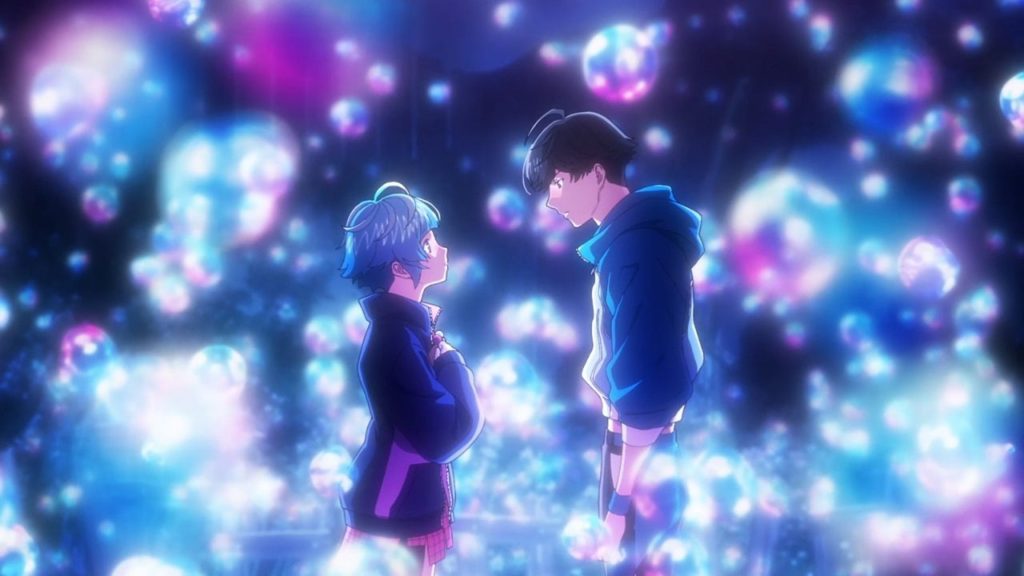
Five years ago, the world was left overrun by bubbles that rained down from the sky with strange reality-bending qualities. When a cosmic explosion occurs at Tokyo Tower, it encases the city within a giant bubble dome. Tokyo is left uninhabitable, submerged in a sea of water, with debris and cars floating off into the air. Orphaned children, however, begin to trespass the dome and continue to live there, partaking in parkour competitions, while bartering for supplies in order to survive.
This is where we meet our protagonist Hibiki, a gifted parkour player of the Blue Blazes team, who prefers the comfort of his own company, most of the time. His hyper-sensitive hearing allows him to hear strange songs emanating from the bubbles. On one such curiosity trip, a gravity anomaly causes him to lose balance and fall into the sea. He is saved by a mysterious girl, the soft-spoken Uta, who soon tilts his world off its axis.
While the plot of Bubble does come off as a bit of a doozy, the star-studded voice cast does well to see the story. Newcomers Jun Shison and Riria take on the roles of Hibiki and Uta, with Mamoru Miyano as Shin, Yuuki Kaji, Alice Hirose, Syayaka Senbongi, Marina Inoue, and Shinichirou Miki in supporting roles.
Attack of the Tiresome Tropes
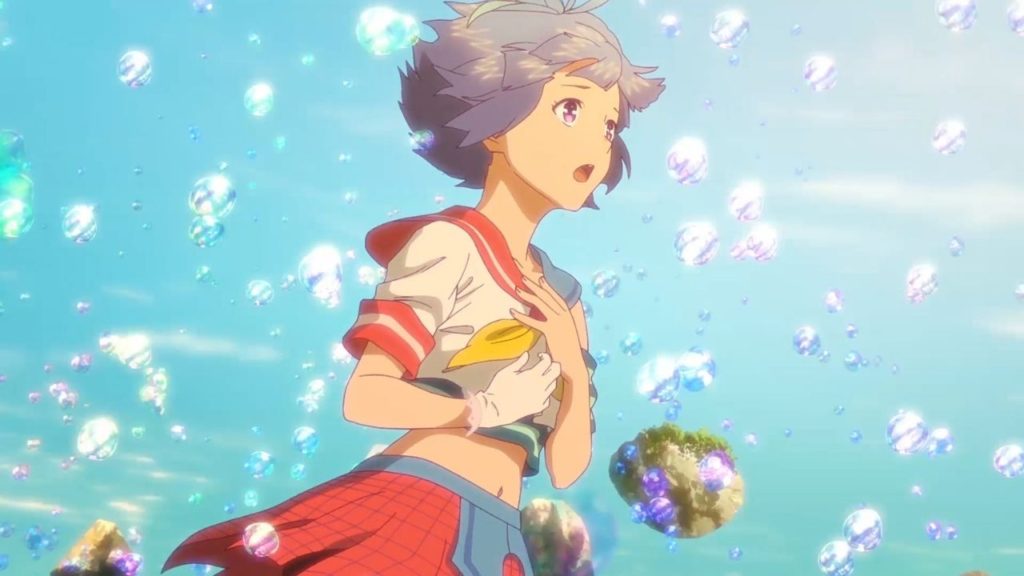
Bubble is very much a sci-fi, post-apocalyptic take on Hans Christian Andersen’s The Little Mermaid. Uta, a sentient bubble infatuated with Hibiki, takes on a human form to be with her significant other at the cost of her own life. It toes the line between a dystopian sports anime and an extraterrestrial romance, which is precisely what leads to its undoing. With a plot as compounded as with Bubble’s, each genre fights for its time in the sun, but ultimately comes off as perfunctory. The dystopian reality made bearable with the parkour games comes off as engaging, but loses momentum when all focus is forced onto the fairytale retelling. The pacing takes a hit, and suffers from a third act crunch, with far too much action and little substance. It plays into every cliche you can think of and then churns it out on a conveyor belt, with heavy exposition dumps, and uninspired storytelling.
My indifference to the story had me questioning anime logic. Like why is Uta the only sentient bubble that can communicate with humans? Are the bubbles supposed to be extraterrestrial? Why do the parkour teams need to barter and trade goods? Does capitalism not exist anymore in this bubble-riddled reality? Why does the government not stop these children from cavorting around in a death zone?
What’s even more disappointing is how none of the characters are worth caring about. Nearly all of them are based on worn-out anime archetypes, especially in the case of Uta and Hibiki. She is, by-definition, a cookie cutter manic pixie dream girl, a waif-like creature dressed in a pop idol outfit, with little to no coherent speech. Born straight out of a male fantasy, she somehow propels the disillusioned Hibiki to live life to the fullest.
The stoic and introverted Hibiki, on the other hand, has very little reason to be as apathetic as he is, yet somehow finds reason to live when he meets Uta. It could come off as endearing, except that the film tries to shoehorn irrelevant subplots, and several parkour matches, that make for an incredibly lukewarm meet-cute.
Hey, at Least It’s Pretty
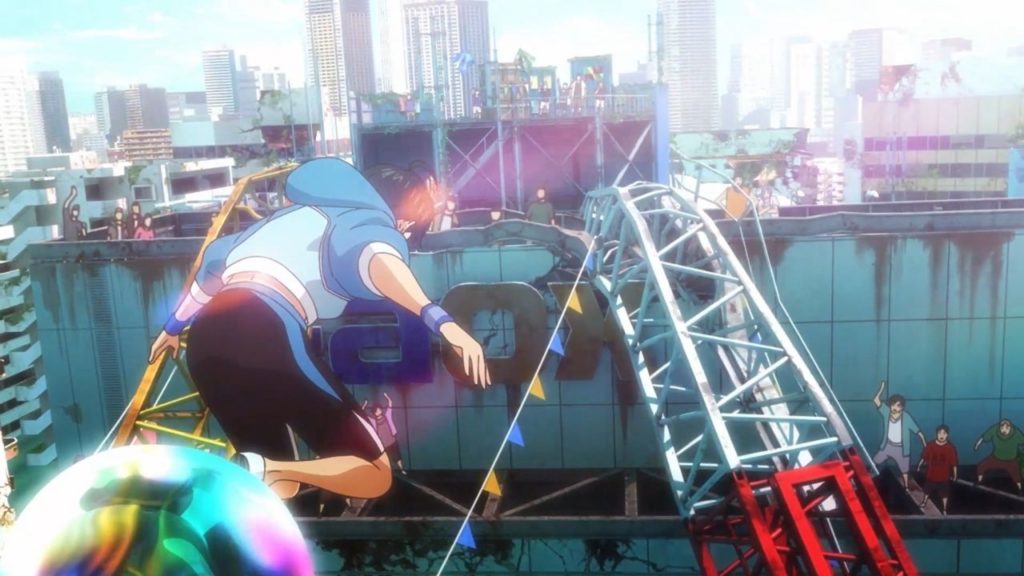
The animation, in contrast, will leave you breathless. WIT Studio makes it known that they’re one of the best in the game, with picturesque visuals that slyly combine 2D and 3D styles. The Tokyo cityscapes are downright stunning, and the bubble-ridden atmosphere leaves an iridescence to the scenery. The parkour sequences are some of the standouts, with quick paced animation and first-person perspectives almost similar to that of a videogame. Flawed as it may be narratively, it is surely a visual spectacle through and through.
Bubble’s unique premise could’ve worked far better as a 12-episode series. The characters could be fleshed out with more emotional girth and nuance, better utilizing their supporting cast of voice actor royalty. The world-building and romance would have more room to develop, with an impactful climax, and a far less forgettable story. For now, contend yourselves with the animation eye-candy and enjoyable soundtrack, because that’s all you’ll really remember once the credits start rolling.

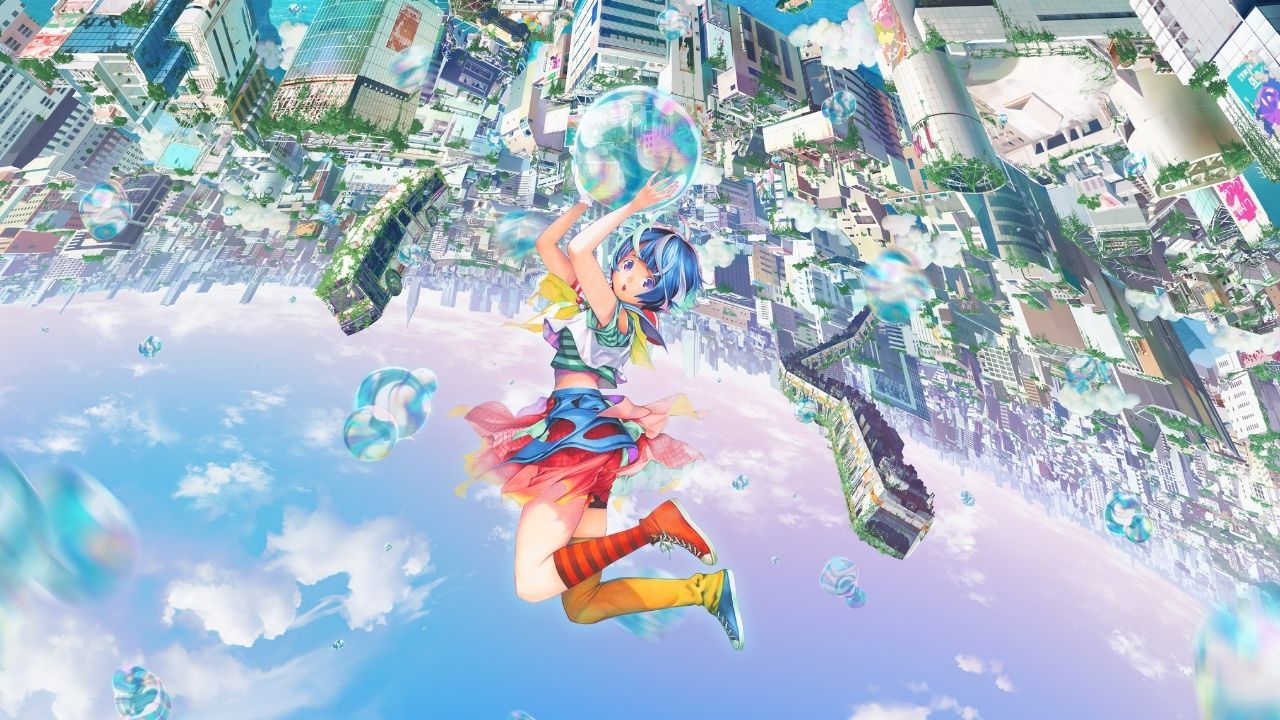



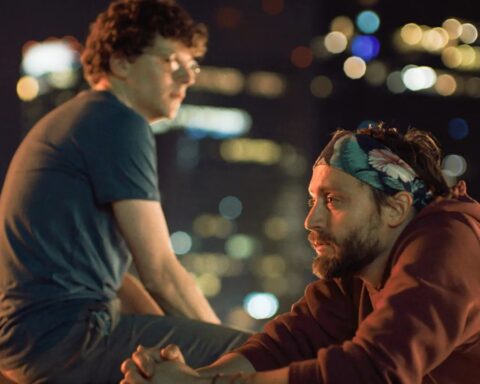

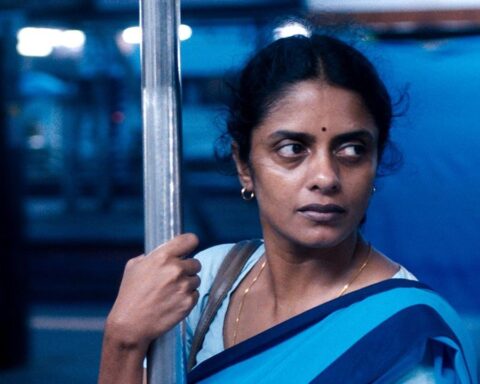

Follow Us